Introduction to the types of coffee beans in Kenya, grown in coffee-producing areas in Kenya
African coffee is famous all over the world for its charming acidity and aroma. In addition to Ethiopian coffee beans, Kenya is certainly not absent. Kenya is located in East Africa, right on the equator, with the Indian Ocean to the east, Ethiopia to the north and Tanzania to the south. Kenya is a big coffee country in East Africa and one of the most important and irreplaceable producers.
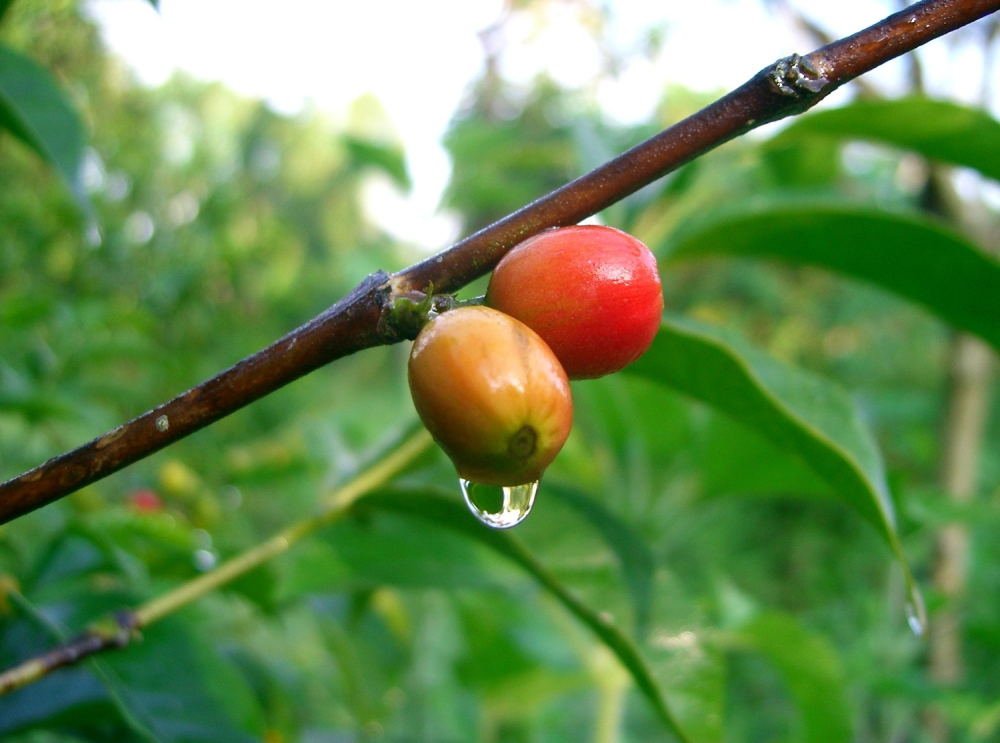
Kenya is a tropical region, with two rainy seasons a year and two harvests, with 60% concentrated from October to December and 40% from June to August. Coffee is mainly grown in volcanic areas from the capital Narobi to the mountains of Kenya at an altitude of 1600-2100 meters. This height is suitable for the development of coffee bean flavor, because the mountain temperature is lower, the growth is slow, the aroma components of coffee beans have been fully developed, the sour taste is more obvious, and the texture is harder. This fertile moonbend-shaped coffee area is the main producer of Kenyan boutique beans.
Kenya is a famous coffee producing country in East Africa and an important producing area of high-quality coffee in the world. Kenya coffee has a full flavor and strong characteristics, and the coffee trade mode also has a set of fine system. The classification of coffee bean size, such as AA or AB, can not be equated with flavor. The bidding batch of coffee bureau is based on cup flavor test, and the bidding price of high-quality Kenya remains high. Kenyan coffee, which is mostly grown at an altitude of 1500murmur2100m, is harvested twice a year to ensure that only ripe berries are picked, and people have to patrol the forest about seven times.
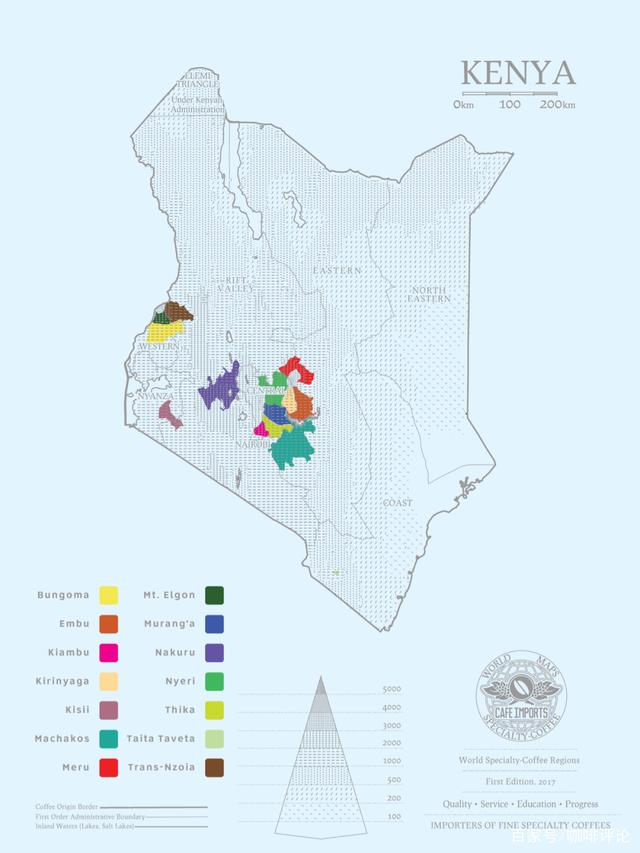
Only ripe berries are picked and people have to tour the forest about seven times. Kenya has two coffee sales systems: auction at the Nairobi Coffee Exchange (central auction system), where 85 per cent of coffee beans are traded through the auction system. Or through direct trade (often referred to as the "second window"), only 15% of coffee beans are traded through direct trade.
The number of coffee produced in central Kenya is the highest in the country, and the best quality coffee also comes from here. Coffee in western Kenya, such as Kisii, Trans-Nzoia, Keiyo, and Thika in the south of Marakwet, has also attracted attention.
Most coffee in Kenya is grown at 1300-2000 meters above sea level; the average temperature is 15-24 degrees Celsius and the average annual precipitation is 9-1200 mm. The high-altitude highlands near Mount Kenya provide the best growing environment for coffee, including the Aberdare Mountains, Nyanza, Kisii, Bungoma, Kericho and Nakuru, where Arabica varieties were first introduced from Ethiopia. As early as the 1930s, SL28 and SL34 were selected and planted nationally in Kenya through Scott laboratory screening. Because these two varieties have excellent berry acidity and were later transferred by some Central American estates, the Costa Rican COE champion beans were SL28 and Rosa the year before last.
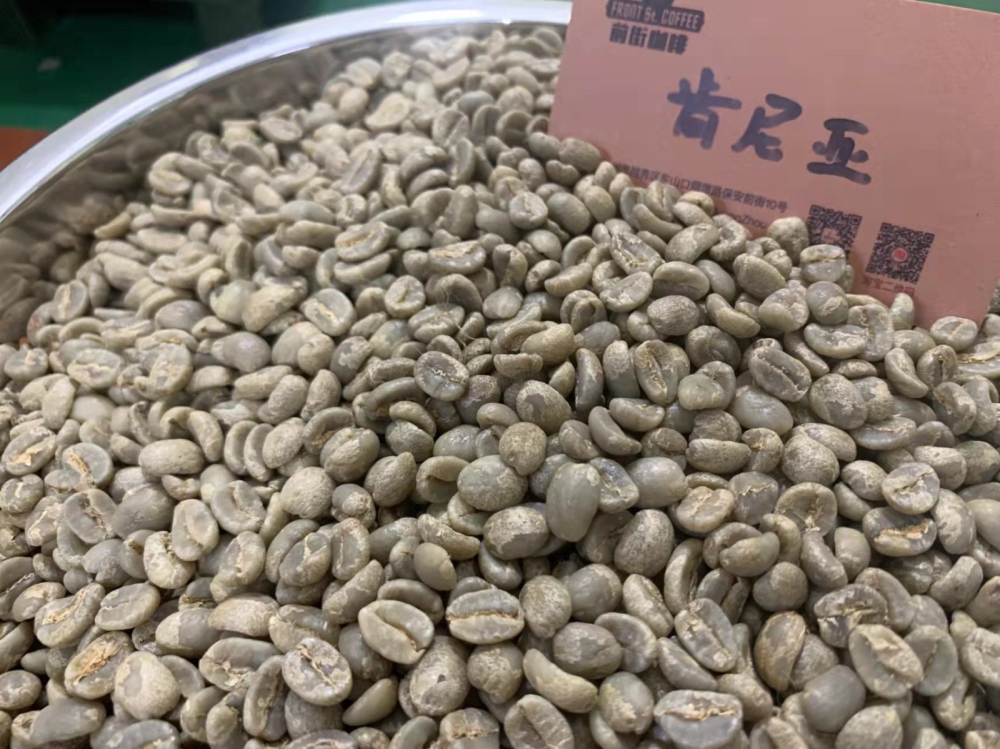
Since then, Kenya has spared no effort to develop varieties that are resistant to leaf rust. Ruiru11 is the first successful variety approved by the Kenyan Coffee Council, which can be understood as the Kenyan version of Katim. The Kenyan coffee beans mixed with Ruiru11 in the front street show a slightly less sweet and sour flavor and a slightly miscellaneous feeling. This also proves that the variety has an obvious effect on the flavor.
Kenyan coffee bean varieties
Kenyan coffee is usually associated with bright acidity, rich, full-bodied wine and unique cup flavor. Some of the most popular varieties in China include K7, Blue Mountain, Batian, Ruiru 11 and SL series. In particular, the SL series has been planted in Kenya for nearly 90 years. Although it covers many varieties, the two most popular are SL-28 and SL-34.
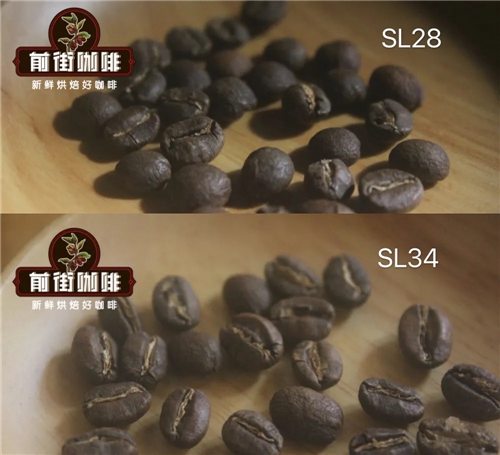
SL28 is one of the most famous and respected varieties in Africa. As a result, it spread from Kenya, which was first selected in the 1930s, to other parts of Africa (especially in the Arabica growing areas of Uganda) and now to Latin America. This variety is suitable for middle and high altitude areas and shows drought resistance, but it is easily affected by the main diseases of coffee. SL28 is known for its simplicity-a quality that means it can be left unattended for years or even decades at a time, and then resume successful production. There are 60-80-year-old SL28 trees in many parts of Kenya, and they are still productive.
The Kenyan SL28 variety is one of the most famous and beloved varieties in Africa. In recent years, it is famous for its shocking blackcurrant and shiny acid skinning, and it is the most symbolic variety after the rose summer seed. In fact, SL28 was founded in Kenya-as if Rosa originated in Ethiopia, but created Panama as a superstar, SL28 also has the ability to do this kind of work. Kenya, where it is grown, will shine to all kinds of coffee countries.

In 1931, a senior official from Scott Laboratory went to Tanganyika (now Tanzania) to conduct field research. He noticed that a coffee tree variety planted in Moduli seemed to be resistant to drought, disease and insect pests, so he collected seeds and brought them to Scott Lab. In 1935, the laboratory selected a single greening plant from Tanganyika drought-tolerant species and continued to improve through breeding. Finally, the SL28 of the descendants of Moduli is released, and the scientific research of dna in recent years has already confirmed that SL28 belongs to the bourbon gene group.
Characteristics of SL28 varieties
SL28 variety is very easy to grow without special care, large bean shape and high yield, high flavor variety. After it was released by the Kenyan government in the 1930s of the 20th century, it was first planted in Kenya and then spread to Uganda. At this stage, it has attracted much attention even in China and America. This variety is suitable for the central plateau region and has the ability to resist drought, but it is still susceptible to key coffee diseases and insect pests. Only when grown in Kenya can SL28 have this unique characteristic. SL28 varieties grown in other countries only have a similar flavor.

SL34 was first selected at the Scott Agricultural Laboratory in Kenya in the late 1930s. SL34 was selected from a tree in the Kabete Loresho property in Kenya, which is called the "French missionary". The appearance of SL34 beans is similar to that of iron card varieties, and the beans close to the shape of iron card beans are screened from Kenyan beans in the front street. The beans are long and oval in shape and look flat on the side. In recent years, genetic tests have shown that SL34 is related to the genome of iron pickup.
Major coffee producing areas in Kenya
Six major coffee producing areas in Kenya include: Thika, Kirinyaga, and the west side of Mount Kenya (Mt. Kenya West, Nyeri, Kiambu, Muranga. The harvest periods of the six major producing areas are all from October to December (the main production season) and from June to August (the by-product season). Among them, Neri and Qilin Yajia are the most famous.

Qilin Yajia producing area is located on the hillside of Mount Kenya, 1300-1900 meters above sea level. Close to the Neri Nyeri producing area, it is famous all over the world for its strong flavor, rich layers and solid taste. Together with the Neri producing area, it is recognized as the two best producing areas in Kenya.
Mulanga (Muranga)
The Muranga producing area belongs to the Central Province, where there are about 100000 coffee farmers. This inland producing area was the place of settlement chosen by the first missionaries because Portugal banned them from living in coastal areas. It is also another producing area that benefits from volcanic soil, with more small coffee farmers than manors. According to the cup test in Qianjie, it is determined that the coffee in this area is bright sour and thick fruit juice. Altitude: 1350-1950m varieties: SL-28, SL-34, Ruiru11, Batian
Kirinyaga (Kirin Yajia)
Kirinyaga is located on the hillside of Mount Kenya, close to Nyeri. It is famous for its strong flavor, rich layers and solid taste of coffee. Together with Nyeri, it is recognized as the two best producing areas in Kenya. Most of the producers in this area are small coffee farmers who join the cooperatives, while the cooperatives play an integrated role, providing washing plants, and coffee farmers send the coffee fruits to the cooperative processing plants for processing.
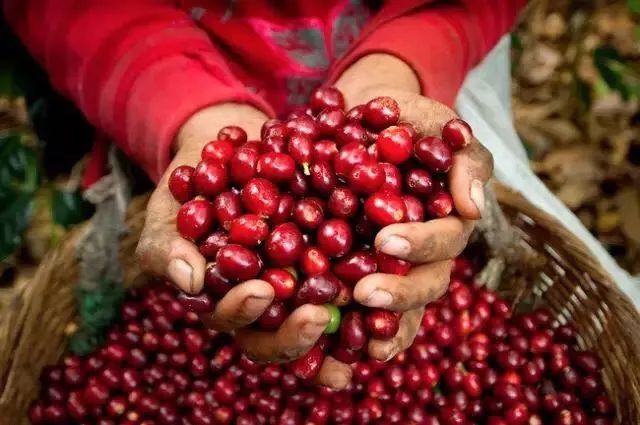
"Kirinyaga" originally refers to Mount Kenya, but when the British colonized the mountain, they found it difficult to remember, so they changed the name of the mountain to "Mt Kenya" instead of "Kirinyaga". Mount Kenya is the second highest peak in Africa. Although it is located in the tropics, the mountain is often covered with snow. Kirin Yajia originally means "white peak". Mount Kenya is not only a United Nations protected area, but also the surrounding foothills and grasslands, where wild animals gather and forage, and is a favorite attraction for tourists.
"Kirinyaga" comes from the Kikuyu, which means "white mountains" and is thought to be the place of the gods. The Kikuyu are the most populous people in Kenya, accounting for 1/5 of the total population.
Kiambu producing area
Central KIAMBU is located in the producing area of central Kenya, which is a traditional tea-growing area, but has the highest altitude coffee-growing area in the region, which is named after the town of Nakuru. This area produces less coffee and is a pattern of manors and small farmers, with two seasons of coffee harvest. Qianjie thinks that the flavor of this producing area is also the bright acid and mellow feeling that most people like.
Altitude: 1850-2200m varieties: SL-28, SL-34, Ruiru11, Batian
Thika producing area
Sika is a small town in Nairobi, the capital of Kenya. There are many coffee fields around Nairobi, and Sika is an industrial town, but surrounded by agriculture and waterfalls. There are about 2000 farmers in Sika. Qianjie determined by cup test that the flavor of the producing area has bright acidity, thick berry juice and honey-like sweetness. Altitude: 1550m-1750m Variety: sl-28,sl-34

Kirinyaga producing area
Located on the hillside of Mount Kenya, close to Neri, Kirinia is famous for its strong, rich and solid-tasting coffee. Together with Nyeri, it is recognized as the two best producing areas in Kenya. Most of the producers in this area are small coffee farmers who join the cooperatives, while the cooperatives play an integrated role, providing washing plants, and coffee farmers send the coffee fruits to the cooperative processing plants for processing. Altitude: 1300 to 1900 meters, harvest period: October to December (main production season), June to August (by-product season). Qianjie through the cup test to determine that the production area is mainly berry flavor, moderate sweetness, honey and cream. Altitude: 1300-1900m varieties: SL-28, SL-34, Ruiru11, Batian.
Nyeri producing area
Neri, close to Mount Kenya, is an important boutique producing area in Kenya, with an average elevation of more than 1500 meters. A lot of Kenyan coffee is produced in this area. Neri is high enough above sea level and located to the east of Aberdare Mountains, and it is also the headland between Mount Kenya and this mountain. due to its high terrain and fertile soil, Neri is a key town in the middle of Kenyan coffee, and coffee-related industrial facilities are also more developed. The Kenyan coffee beans in the area are famous for their high altitude, and the level is also quite high. Qianjie determined that the coffee beans produced in this area have dark berry flavor, bright sweet and sour plum and delicate aftertaste. Altitude: 1200mm 2300m varieties: SL-28, SL-34, Ruriu11, Batian

The west side of Mount Kenya (Mt. Kenya West) producing area
The western side of Mount Kenya includes the Bungoma district of Kisii and Mount Elgon. Chesi is located in southwestern Kenya, not far from Lake Victoria, is a relatively small producing area, most coffee beans come to this co-operative of free small producers. The coffee flavor of this producing area is very different from that of the central producing area. According to the cup test in Qianjie, this producing area has roasted nuts and soft acidity, and is widely loved by buyers who do not like bright acidity. Altitude: 1450-1800m Variety: SL-28, SL-34
Coffee bean treatment
The flavor of coffee is not only related to the variety, but also directly related to the method of treatment. Kenyan coffee beans are washed for 72 hours. Generally speaking, the method of washing coffee beans is to remove the peel and pulp of coffee cherries, leaving only a thin layer of mucous membrane to wash and ferment for 24 hours, before drying by machine or in the sun. The Kenyan-style washing treatment is not the same, the whole fermentation process will reach 72 hours.
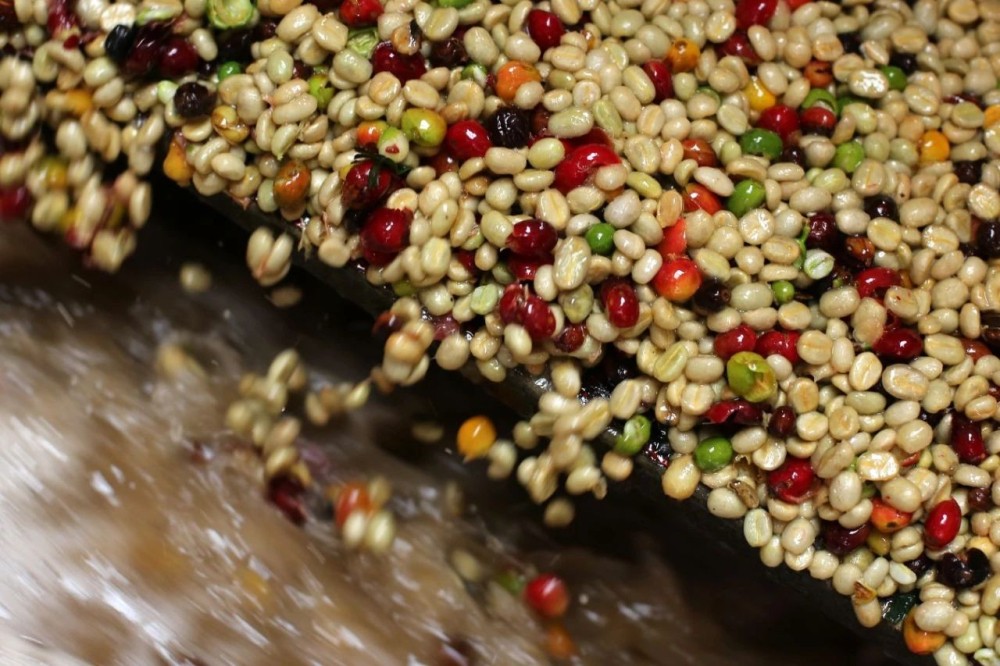
Kenyan water washing treatment is a cycle of repeated treatment after fermentation, the best quality cherries are selected on the day of harvest, peeled and fermented, fermentation time is 24 hours, and then washed with clean river water after 24 hours. Then, it is fermented again with clean river water for 24 hours, and then washed, so it is repeated 3 times for 72 hours, so it is called Kenyan 72-hour fermentation water washing treatment, referred to as K72. Qianjie believes that this treatment allows coffee beans to ferment for a long time at low temperatures, so that beans can have a brighter, cleaner and full flavor!
The parameters of Kenyan coffee in the front street:
In order to show the acidity of Kenyan coffee, the front street uses hot water to brew.
Qianjie use medium fine grinding / fine sugar thickness (China 20 standard screen screening rate of 80%. Use 15 coffee powder, then brew with a V60 filter cup, a water temperature of 91 degrees Celsius, a powder-to-water ratio at 1:15 and a three-stage water filling technique.
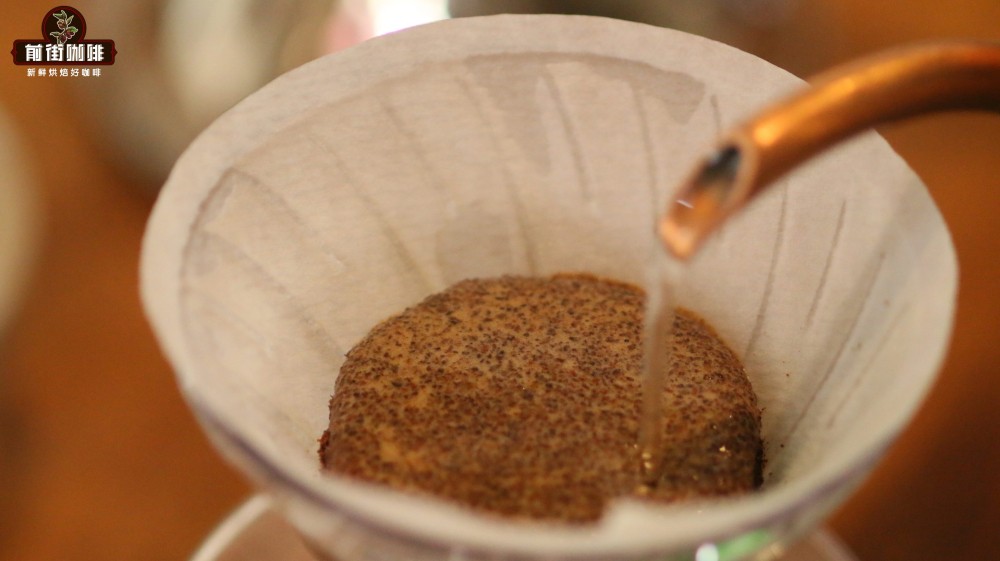
The use of segmented extraction, with twice the amount of coffee powder water for steaming, that is, 30 grams of water for 30 seconds, and the reason for the need for steaming process is to make coffee powder can discharge the internal carbon dioxide gas, so that the latter stage of the extraction is better stable. When the small water is injected around the circle to 125 grams, the injection will be stopped until 225 grams, then the filter cup will be removed after the dripping of the filter cup, and the extraction time will be 2 minutes 39 grams. Next, pick up and shake the whole cup of coffee, then pour it into the cup and taste it.
Kenya Asalia coffee bean flavor: wet aroma with ripe tomato and flower aromas, imported virgin fruit and black plum flavor, bright acidity, clean and rich palate, outstanding mid-course sweetness, juicy, raspberry and yellow sugar on the finish, and green tea aroma.
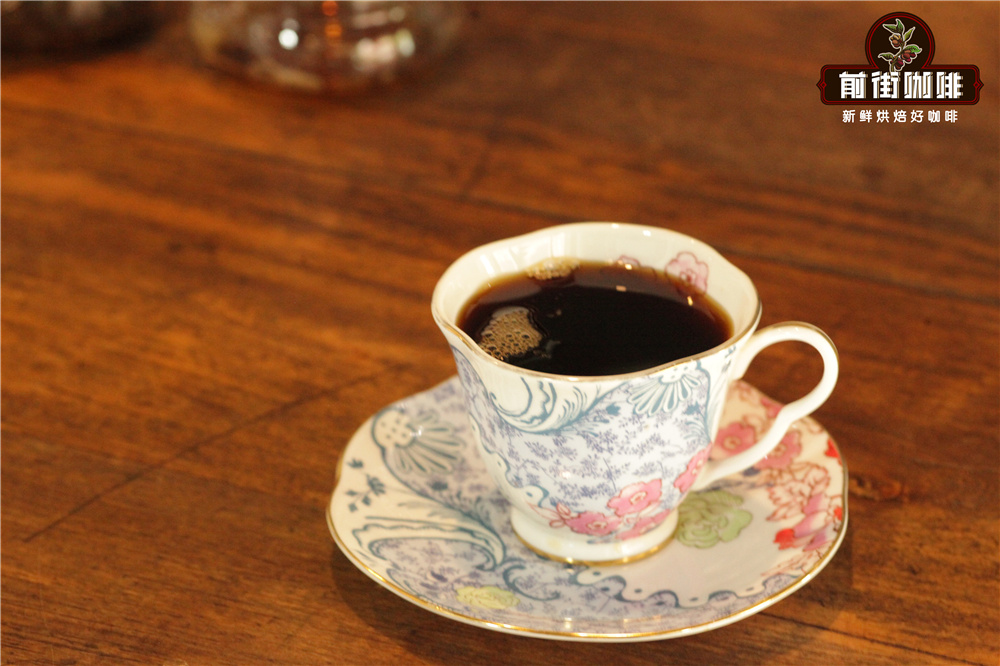
Suggestions for making coffee in front of the street:
For the brewing of coffee, Qianjie has always believed that the freshness of coffee beans has a great relationship with the flavor of coffee, so the coffee beans shipped in Qianjie coffee are roasted within 5 days. The purpose of Qianjie roasting is "freshly roasted coffee", so that every guest who places an order is the freshest coffee when he receives it. The bean cultivation period of coffee is about 4-7 days, so when the guest gets it, it is the time when the flavor is the best.
For those who need to be ground, Qianjie warmly reminds you that if the coffee beans are ground in advance, there is no need to raise the beans, because in the process of transportation, the pressure caused by carbon dioxide in the package can also make the coffee flavor round. so you can drink a cup of coffee as soon as you receive the coffee powder. But the coffee powder needs to be brewed in time, because the coffee powder oxidizes more quickly after contact with the air, that is to say, the flavor of the coffee will dissipate more quickly, and the flavor of the coffee is not so good. Therefore, Qianjie suggests buying whole beans, grinding and flushing now, so that we can better taste the flavor of coffee.
Professional coffee knowledge exchange more coffee bean information please follow the coffee workshop (Wechat official account cafe_style)
For more boutique coffee beans, please add private Qianjie coffee on Wechat. WeChat account: qjcoffeex
Important Notice :
前街咖啡 FrontStreet Coffee has moved to new addredd:
FrontStreet Coffee Address: 315,Donghua East Road,GuangZhou
Tel:020 38364473
- Prev

The characteristics of Kenyan coffee and the current situation of Kenyan coffee
Following Cafe Review (Wechat official account vdailycom) found that the coffee shop in Kenya has opened its own small shop. Kenyan coffee industry insiders all think that Kenyan coffee is one of its favorite products, it has wonderful and satisfactory aroma, balanced and delicious acidity, well-balanced particles and excellent fruit taste. Kenyan coffee grades vary according to the size of coffee beans.
- Next
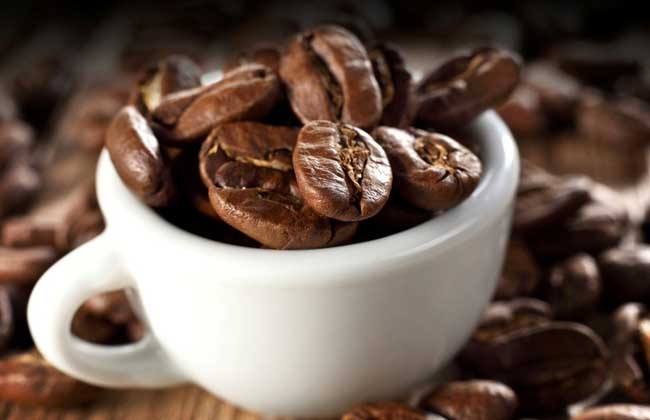
Is Kenyan coffee sour? Kenyan coffee taste description
Following Cafe Review (Wechat official account vdailycom) found that Beautiful Cafe opened a small shop of its own Kenyan coffee-high-quality Kenyan coffee with aroma, rich and fruity flavor, rich and perfect taste. Kenyan coffee has a wonderful fruit flavor, tastes like BlackBerry and grapefruit, and is a favorite of many coffee gluttons. This coffee comes with
Related
- Detailed explanation of Jadeite planting Land in Panamanian Jadeite Manor introduction to the grading system of Jadeite competitive bidding, Red bid, Green bid and Rose Summer
- Story of Coffee planting in Brenka region of Costa Rica Stonehenge Manor anaerobic heavy honey treatment of flavor mouth
- What's on the barrel of Blue Mountain Coffee beans?
- Can American coffee also pull flowers? How to use hot American style to pull out a good-looking pattern?
- Can you make a cold extract with coffee beans? What is the right proportion for cold-extracted coffee formula?
- Indonesian PWN Gold Mandrine Coffee Origin Features Flavor How to Chong? Mandolin coffee is American.
- A brief introduction to the flavor characteristics of Brazilian yellow bourbon coffee beans
- What is the effect of different water quality on the flavor of cold-extracted coffee? What kind of water is best for brewing coffee?
- Why do you think of Rose Summer whenever you mention Panamanian coffee?
- Introduction to the characteristics of authentic blue mountain coffee bean producing areas? What is the CIB Coffee Authority in Jamaica?

